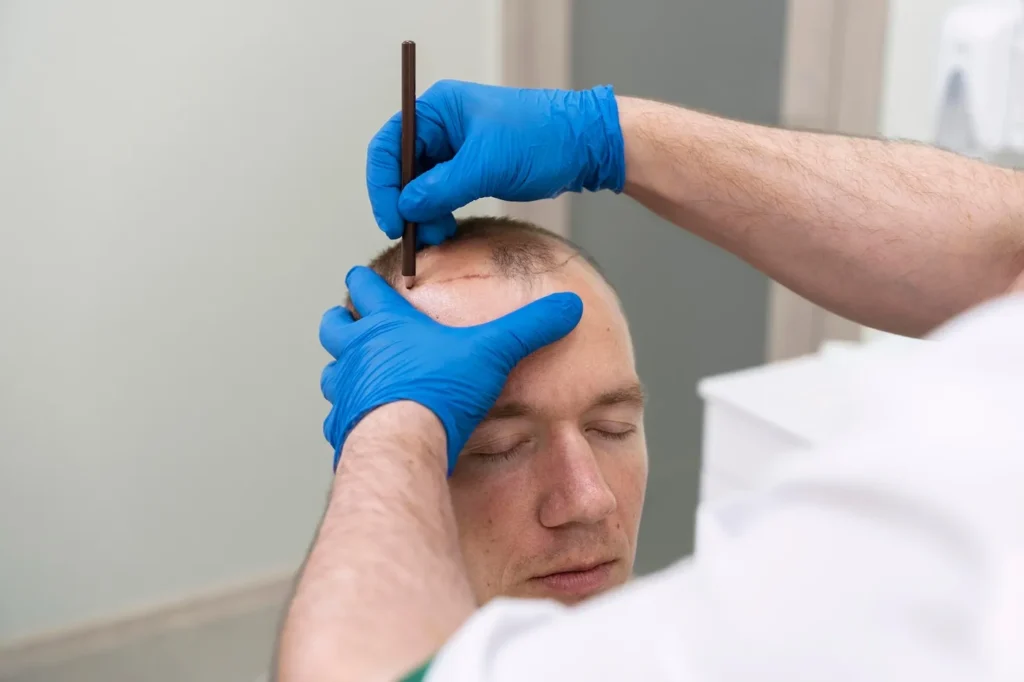Hair Restoration
What is Hair Restoration?
Hair restoration refers to treatments aimed at stopping hair loss, stimulating regrowth, and restoring fuller, natural-looking hair. Depending on the extent of thinning or baldness, this can involve non-surgical therapies, injectables, or surgical transplant procedures.
Who can benefit from it?
-
Men and women with thinning hair, receding hairlines, bald patches or general hair loss
-
People looking to prevent further hair loss early on
-
Those wanting to improve hair density, hair texture, and scalp health
-
Individuals seeking natural-looking restoration after trauma, medical treatment, or hormonal changes
Causes of Hair Loss We Address
-
Genetic / androgenetic alopecia (pattern hair loss)
-
Hormonal changes (e.g. menopause, thyroid issues)
-
Stress, scalp inflammation, or poor scalp health
-
Lifestyle and nutritional deficiencies
-
Scarring or damage from injury or previous treatments
What Treatment Options We Offer
-
Non-Surgical & Regenerative Treatments
-
Platelet-Rich Plasma (PRP) therapy to stimulate follicles and improve hair thickness and health.
-
Microneedling of the scalp, possibly combined with serums or growth factors, to promote circulation and follicle stimulation.
-
Low-level laser therapy (LLLT) to enhance blood flow and encourage dormant follicles to grow.
-
Mesotherapy or nutrient infusions to feed follicles with vitamins, minerals and boosting scalp wellness.
-
-
Surgical Restoration (Hair Transplantation)
-
Follicular Unit Extraction (FUE): individual follicles are harvested (usually from donor-rich zones) and transplanted into thinning or bald areas. Minimally invasive with small scars. Wikipedia+2The Aesthetic Society+2
-
(If offered) Strip method / FUT (Follicular Unit Transplantation) for larger graft numbers (if suitable). Wikipedia+2The Aesthetic Society+2
-
What to Expect During Treatment
-
Consultation: We examine your scalp, assess hair loss pattern, donor area condition, your health history, lifestyle, and cosmetic goals.
-
Procedure: For non-surgical treatments, sessions typically include scalp prep, delivery of therapy (e.g. injections, laser, microneedling). For transplants, donor harvesting, graft preparation, and implantation.
-
Duration: Non-surgical sessions might be ~45-90 min; transplant surgeries may take several hours depending on graft count.
-
Downtime & Healing: Some swelling, redness, or mild discomfort is normal. Surgical treatments have more recovery time; non-surgical treatments tend to allow faster return to routine.
-
Results Timeline: Initial improvements may begin within a few weeks; more visible results over 3-6 months. Full outcomes from a transplant often take up to a year.
Why Choose Spadana for Hair Restoration?
-
Experienced practitioners with training in both non-surgical and surgical hair restoration modalities
-
Use of high quality, sterile techniques and tools, premium growth factor / regenerative therapy options
-
Personalized care plan based on your specific hair loss pattern, health condition, and expectations
-
Supportive follow-up and aftercare protocols to maximize growth and long-term success
Considerations / Is It Right for You?
-
The degree of hair loss: some follicles may be permanently inactive or lost; early intervention tends to yield better results
-
Medical conditions, medications, or scalp conditions that may affect healing (e.g. bleeding disorders, active infections, autoimmune scalp disease)
-
Realistic expectations: growth can be gradual, sometimes modest; transplanted hair behaves somewhat like native hair (needs care, maintenance)
-
Commitment: some treatments require multiple sessions and care maintenance for best results


